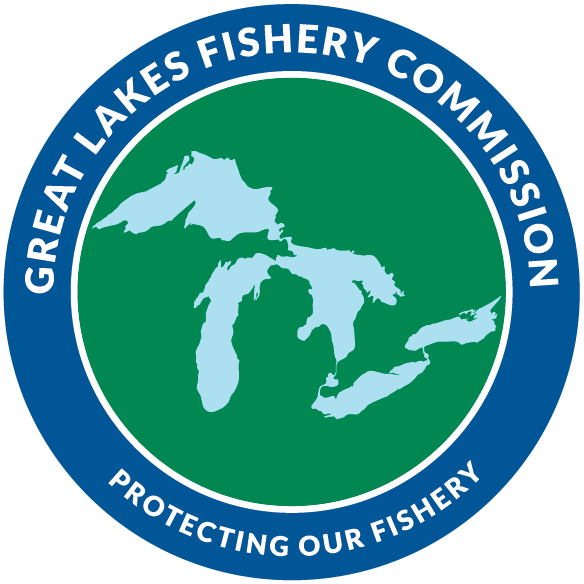Updated 2024-07-03 20:44:34
Lake Huron -> 1.0 Salmonine (Salmon and Trout) -> Lake Trout Yield
Reporting Interval
2018 - 2022
Area
Lakewide
Meeting Target?
Does Not Meet
Indicator Trend
Downward trend
Confidence?
High
1.1.2. Lake Trout support harvest of 1.6 million kg per year and account for 67% of salmonine harvest.
Lake Trout populations in Lake Huron collapsed during the 1940s and subsequent efforts to re-establish self-sustaining populations began in the 1970s through planting of hatchery-reared fish and control of Sea Lamprey (Eshenroder et al. 1995; Johnson et al. 2004). Fishery managers anticipated a dominant role for Lake Trout in the salmonine community despite the initial slow pace of stock recovery (DesJardine et al. 1995). Lakewide yields of Lake Trout of 1.4 to 1.8 million kg were considered plausible by DesJardine et al. (1995) once self-sustaining populations were achieved. Thus, a reasonable target yield would be 1.6 million kg, which means that Lake Trout would account for two-thirds (67%) of salmonine harvest at the target level of 2.4 million kg annually.
Average annual lakewide yield of Lake Trout in Lake Huron during the reporting period was 0.34 million kg (range: 0.29-0.40 million kg per year), which represented a decrease of 10% from the previous period mean of 0.38 million kg (Figure 1). However, lake trout continue to dominate the salmonine fish community, representing 77% of salmonine harvest during the current reporting period and 75% of the harvest in the preceding reporting periods (Figure 2). Proportionally we have surpassed the FCO target of Lake Trout relative to other introduced salmonines; however, that is mostly attributed to the substantial decline of Chinook Salmon in the early 2000s. Nevertheless, the highest recreational-fishery yield of Lake Trout since 2004 occurred in U.S. waters during 2020 (0.12 million kg), which increased the average annual recreational-fishery yield 42% during this reporting period to that of the one observed between 2011-2017.
Commercial fisheries remain the dominant source of exploitation of Lake Trout, accounting for over 77% of the lakewide yield, down slightly from 85% during the previous reporting period (Figure 3). Thus, the decline in Lake Trout yield observed during this reporting period is driven by declining yield in the commercial fishery. It is worth noting that commercial fishing effort has continued to decline during the current reporting period concurrent with declines in Lake Whitefish abundance. Despite lower yield, there is evidence of increased commercial catch rate of Lake Trout (Figure 4).
Total fishery yield of Lake Trout in Lake Huron, 1985-2022.
Species composition of the salmonine harvest in Lake Huron, 1985-2022.
Total annual yield of Lake Trout in Lake Huron by fishery, 1985-2022.
Average commercial yield-per-unit-effort (kg/km) for large-mesh gillnets in Lake Huron, 1985-2022.
Methodology
This is a compilation of commercial reporting, subsistence reporting, and creel survey estimates. Creel estimates for the recreational fisheries is underrepresented as they are unknown in Ontario waters. Recreational yield from US waters is derived from numbers of fish (including charter values) and the average weight of fish sampled during the creel.
Other Resources
Contributing Author(s)
- Stephen James - Ontario Ministry of Natural Resources and Forestry
- Ji He - Michigan Department of Natural Resources
- Ryan Lauzon - Saugeen Ojibway Nation
- Ronald Green - Ontario Ministry of Natural Resources and Forestry
- Scott Koproski - United States Fish and Wildlife Service

